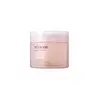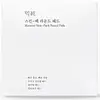What's inside
What's inside
 Key Ingredients
Key Ingredients

No key ingredients
 Benefits
Benefits

No benefits
 Ingredients Side-by-side
Ingredients Side-by-side

Water
Skin ConditioningButylene Glycol
HumectantHydroxyethyl Urea
HumectantNiacinamide
SmoothingDiethoxyethyl Succinate
Solvent1,2-Hexanediol
Skin ConditioningHydroxyacetophenone
AntioxidantGlycereth-25 PCA Isostearate
EmulsifyingPropanediol
SolventHyaluronic Acid
HumectantHydrolyzed Hyaluronic Acid
HumectantSodium Hyaluronate
HumectantGlycerin
HumectantZea Mays Kernel Extract
Fructan
Skin ConditioningGlucose
HumectantXanthan Gum
EmulsifyingEthylhexylglycerin
Skin ConditioningAdenosine
Skin ConditioningSodium Phytate
Citric Acid
BufferingSodium Dna
Skin ConditioningHydrolyzed Collagen
EmollientWater, Butylene Glycol, Hydroxyethyl Urea, Niacinamide, Diethoxyethyl Succinate, 1,2-Hexanediol, Hydroxyacetophenone, Glycereth-25 PCA Isostearate, Propanediol, Hyaluronic Acid, Hydrolyzed Hyaluronic Acid, Sodium Hyaluronate, Glycerin, Zea Mays Kernel Extract, Fructan, Glucose, Xanthan Gum, Ethylhexylglycerin, Adenosine, Sodium Phytate, Citric Acid, Sodium Dna, Hydrolyzed Collagen